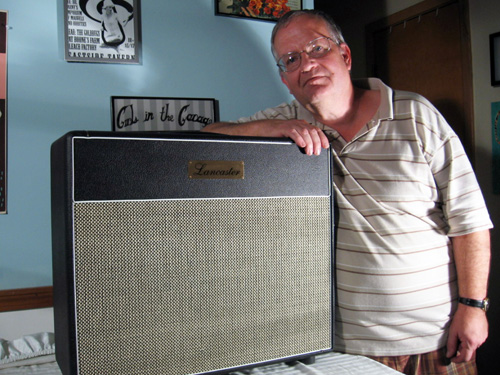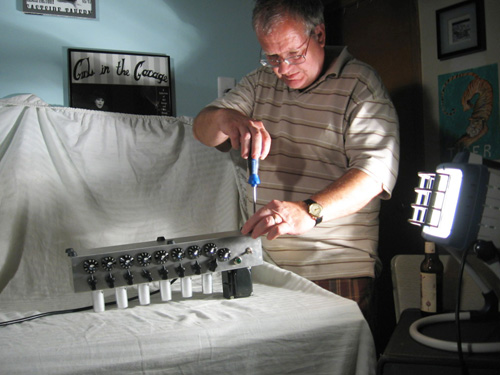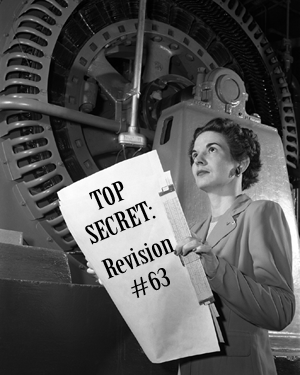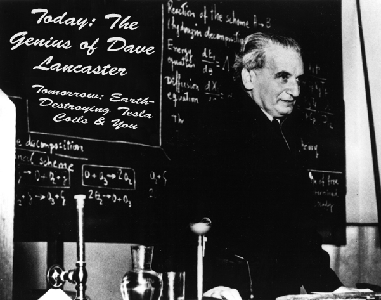

Lancaster Amplification was started by Dave Lancaster in 1976 and to this day he still personally takes your order, hand wires your amplifier, and plays through it to make sure it's perfect. This is a transcription of a longer conversation with Dave exploring his philosophy on music, his history as a solder-slinger, and even features a few of Dave's trademark stories. Take a minute and get to know Peoria, IL's favorite mad scientist.
Lancaster Musical History
Scott Walus*: So why don't we start out by you telling me a little bit about how you got started with audio?
Dave Lancaster: Basically, I got into audio, well, first of all being the musician but also hi-fi. I love good tunes. When I was 13 years old, I knew I wanted to do something with music when the Beatles came to America. I saw the Beatles, and all the cute girls were pulling their hair out, and I was an ugly pimple-faced kid, and I said, “Man, I gotta play guitar!” 
SW: Nothing motivates a 13-year-old boy like a sea of screaming girls...
DL: Well, I started off as a piano player, my Mom started me at five and I was literally forced to take lessons until 13. When the Beatles hit America, that year I knew... That summer I was sent to a YMCA day care center and the counselors there had learned two songs off the Beatles' album. I went to a movie and saw the Shea stadium and thought “I need a piece of this action.” It was then that I switched from piano to guitar.
I put my first band together at 15. We played in bars and I was a union musician. This was in 1966. Then in 1970, we put together a basement band that was more focused on songswriting and we came up with 17 original songs. But shortly afterward, I moved to Chicago and went to DeVry (University).
SW: Is that when the switch happened from performer to mad scientist?
DL: I still write music to this day, but I'm far more interested in the actual tonality of these amps rather than playing in a band. I played professionally in a band from 1981 until 1989 and by 1990, I realized that all of this gear that I owned, I really thought that it could be better. I am quite literally obsessed with creating the finest sounding amplifier in the world, it is my life-long goal. So far I haven't see much that can compete with what I'm doing at any price. I've seen a few products that hang together, but it's amazing how bad how many things actually are.
SW: You mentioned attending DeVry, would you mind discussing that a bit?
DL: I went there when I moved to Chicago. I was living in Peoria, and the gal I was dating at the time moved up there and she lured me there with tickets to the Deep Purple concert, I saw them in 1971 at the Chicago Amphitheater. Then I ran back to Peoria after dealing with her crazy Polish mom only to be drawn back there when she had tickets to see CTA (Chicago Transit Authority). I found an apartment in Oak Park selling lady's shoes that cost $90 a month with utilities included. At 19, the first three things I bought were a Sounddesign clock radio, an Eskimo fan, and a Marshall full stack.
DeVry University During the Tube Era
SW: And what about DeVry?
DL: Well, I couldn't find a job, I had experience, but had no schooling or formal experience so I made a power move. I acquired a government loan, and sold lady's shoes while I went to DeVry. Went to school from 1971 to 1974, in 1973 I got a job at a service shop and I was the audio guy. I didn't like working on televisions, there was a lot of dirt  and they had dangerously high voltage. This shop was the warranty center for Pioneer, Harman Kardon, Sansui... I cut my teeth on early audiophile equipment. Everything at DeVry involved tubes. In fact they showed us an op amp and deemed it “experimental technology.” They showed us a few solid state devices, but everything revolved around tube circuitry. At the shop it was about 50/50, tube Fisher, Harmon Kardon, HH Scott.
and they had dangerously high voltage. This shop was the warranty center for Pioneer, Harman Kardon, Sansui... I cut my teeth on early audiophile equipment. Everything at DeVry involved tubes. In fact they showed us an op amp and deemed it “experimental technology.” They showed us a few solid state devices, but everything revolved around tube circuitry. At the shop it was about 50/50, tube Fisher, Harmon Kardon, HH Scott.
SW: What bridged that gap between “musician Dave” and “hi-fi Dave?”
DL: I moved back to Peoria in 1975 and in '76 this building that was a barber shop became a music store (Flores Music) and I was hired when I walked in. I started repairing every make and model of guitar amp that you can imagine. From the current high wattage solid state amplifiers to 1950s tube models. Combined with my time at Video Service and Electronics Diversified, I've worked on just about everything that you can think of.
On the 63rd Revision, Lancaster Amps Was Born
SW: When did all this repairing turn into the desire to build amps?
DL: After owning over 300 different amplifiers. I've always been a buyer/seller/trader. I'd go down to a pawn shop, buy a Fender Princeton Reverb for $250, do a little work, and someone would buy it and I'd have to get something else to replace it. Out of so many amps, there were only a few that plucked at my heart strings. There w as a special-sounding 1961 Fender Chocolate Deluxe and the tones became ingrained in my mind. I actually played through that one for three years, which is amazing because I went through 100 amps in the 80s alone. I had an Ampeg B-12x Portaflex and it sounded as great as it looks, but I wanted to build something even better.
as a special-sounding 1961 Fender Chocolate Deluxe and the tones became ingrained in my mind. I actually played through that one for three years, which is amazing because I went through 100 amps in the 80s alone. I had an Ampeg B-12x Portaflex and it sounded as great as it looks, but I wanted to build something even better.
I built my first amp when I was jamming with some guys. I jammed every Thursday night for 6 years and I used that time as R&D. I built my first amp from complete scratch with my own circuit in 1994 and sounded like nothing else. I revised that amplifier over 60 times. On the 63rd time I really thought that it was special. That amp became the Essix with the 6V6s. What a brutal undertaking it was but I had to discontinue it because I couldn't get quality 6V6 tubes and I didn't want musicians to have to track down NOS tubes.
SW: Sixty-three, that's a boggling amount of revisions! What made you decide to start the process all over again with all of your different models?
DL: People need different amounts of power for certain situations. I don't believe in power scaling. The Brutis is 15 watts of Class A tube amplification and its slope control allows for amazing versatility, '59 bassman, Marshall crunch, and even Vox AC30 chime. But I build new amplifiers based on people coming to me and telling me that there are tones that they literally cannot buy today. The Leedis was built because there are no truly great clean amplifiers. The Cavetone was built on a request to revise those great 50s one knob circuits. I really love the challenge. I also really love that feeling of helping someone achieve that tone that's in their head.
SW: Aside from all of this experience repairing and building amps, what makes your amplifiers different than the other boutique amps?
DL: I've bridged the gap between the multi-thousand dollar musical hi-fi technology and music gear. I use that hi-fi technology and engineering in the guitar amps that I build. Other builders don't know about the military-grade parts. I've been researching parts quality for tone since the late 1970s. Resistors, capacitors, I've researched the different parts and brands to achieve the best that can be done. That's when I started thinking about making a better product. Trial and error, playing and listening. Everything is tuned by ear, nothing is designed by a computer. Engineers that don't have this experience use computers, it's overly complex and it doesn't necessarily sound good.
SW: What about modern mass-produced amps?
DL: In my opinion, the party ended in about the mid '70s, everyone started cutting corners, everything had PC boards. The very shortcomings of the modern equipment gave me hope. I saw the transition of things. I love the early Gibson, Valco, and Fender. The amps of the '50s were probably the best that were ever done. Then Jim Marshall came along and took the power to a whole new level, along with Vox. They took these little amps and made them loud. Of course there was Sound City that always had interesting circuits, I thought they did some things better than other amps and then Hiwatt followed. And then there was Orange... I've learned from and studied these circuits, and I've taken the best from circuits of the past and improved upon them, made them easier to service, laid them out cleaner with less wiring (there is only 1/2 the solder connections in a Lancaster Amplifier than in than in a turret or eyelet board with the same exact circuit), improved the grounding, a lot of those were shock hazards. I've taken the next step by revising and improving these vintage circuits to accomodate modern parts. A lot of that vintage tone of the 50s and 60s was found in capacitors and output transformers no longer made today and to try to build the same circuits with inferior parts would only lead to disappointment. I work with what is available and that means my amps sound great without having to use vintage tubes or mods with vintage parts.
Dave “Wild Hair” Lancaster: Pride of the Mad Scientific Community
 SW: To wrap it up, could you explain why you embrace the “mad scientist” label?
SW: To wrap it up, could you explain why you embrace the “mad scientist” label?
DL: That's how I think about myself. I'm not the type that wakes up in the morning and looks at my hair if that makes any sense. My wife always has to ask me to brush my hair because it's always a little bit wild. I don't look at myself in the mirror very often. I wake up in the morning and the first thing I think is about what I am going to fix. I can't wait to get out into the laboratory. My passion in life is perfecting the best. I came into this with the idea that I wanted these amps for myself, and if I didn't sell any I would've still been satisfied as they're not just copies. In my own opinion, I've taken each one of them a step further. Taking the Tweedy Fenders, I made them even creamier and smoother. Taking the JMI Voxes and making them more reliable with less brittleness. Taking the 60s Plexis and eliminating the noise and getting that sound at a usable volume. It's an obsession to do the best job that can be done. If I can find a better part at 10 times the price, I'm going to buy that part. I don't look at price, I'm a musician, not a beancounter.
*(Scott Walus is currently pursuing a PhD in Communication Studies at the University of Missouri-Columbia, plays 12-string electric guitar in Pat Boone's Farm, and has been a soundboard, guinea pig, and long-time friend of Doc Lancaster.)